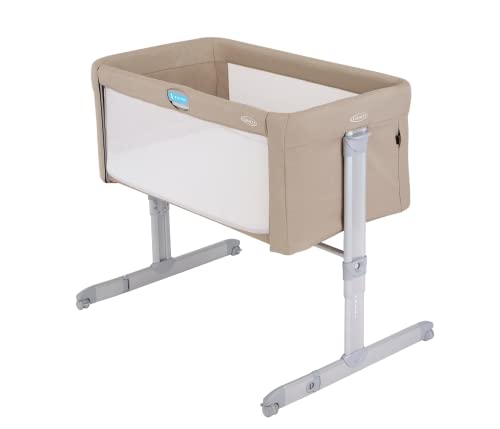Bedside Cosleeper
A bedside cosleeper attaches to your adult bed. As long as you adhere to the CSPC guidelines for sleeping areas for infants, it's safe.
These guidelines are similar to the crib bedding standards. You can read more about these guidelines here. When selecting co sleeper bedside cot sleeping device security, comfort and ease of use are the primary factors to consider.

Safety
Many new parents and expectant mothers have embraced cosleeping or bed-sharing, as per the American Academy of Pediatrics recommendation that infants sleep in the same room as their parents. The Academy says that sharing rooms is safer than sleeping with babies in the same bed because it lowers the chance of Sudden Unexpected Death in Infancy (also known as SIDS). The AAP does not recommend bed-sharing but it does suggest that co-sleeping on separate sleeping surfaces is a good option to reduce the risk of SIDS. The development of the bedside crib was crucial for a number of families.
A bedside cosleeper is a similar to a crib sleeper that can be attached to an adult bed frame. The bedside cosleeper lets parents keep an eye on the baby and gives the baby the ability to sleep in their own bed. The best cosleepers are built with top-quality materials and adhere to strict safety standards. Be sure to look for the Juvenile Products Manufacturers Association (JPMA) stamp of approval, which demonstrates rigorous product testing and quality control to ensure your child's safe cosleeping experience.
The safety of a bedside sleeper depends on several factors that include the way it is set up and secured to the parent's bed. It is essential that the bedside sleeper be secured to the mattress of the parent in a manner that prevents gaps and spaces, in which an infant could be trapped. This can pose the risk of suffocation. It is crucial that the attachment system for a bedside sleeper be tested to ensure that it is able to withstand any forces that may be applied to it during use, like the parent bouncing on and off the sleeper. horizontal force applied to the attachment system or corners of the bedside cosleeper.
The standard for bedside sleeping cribs is based on to the federal consumer safety standards for bassinets (16 CFR part 1218) and specifications for the performance of closed openings. The requirements that are mandatory in the standard also address neck and head dangers of entrapment by requiring that, following the application and release of 50 lbs. horizontal force near the attachment systems and corners of the bedside sleeping device, an opening that is greater than 1.0 in. cannot be created. ASTM's electronic Reading Room offers read-only versions of the standard.
Convenience
While many parents have avoided cosleeping because of fears of suffocation, SIDS or the "Ferberization" process that makes children to sleep alone, anthropologists have long noted that mammals and primates as well as those living in non-Western societies, frequently co-slept. This is due to the fact that babies are soothed by hearing their mother's voice, and may also learn to soothe themselves.
large bedside cot come with an innovative design that is attached to the side of any bed and swivels for ease of access to feedings in the middle of the night or diaper changes. Look for one with adjustable feet that retract to accommodate various mattress sizes, and a big storage compartment for all your baby's needs.
Choose a bedside sleeper which is compatible with standard crib bedding so that it can be used safely as your child grows. You may also want to think about a convertible model that could transform into a play yard or deeper bassinet for years of use, and folds up easily for travel.
Portability
A bedside cosleeper with wheels or a lightweight base is much easier to move than one with a bulky wooden frame or a substantial base. The babybay Bedside Sleeper, HALO BassiNest Essentia and Snoo Smart Sleeper all come with amazing portability features. The adjustable feet retract to accommodate platforms and the legs fold inward to ensure maximum proximity to the mattress and sidewalls made of 100% mesh that allow for ventilation without any material covering baby's mouth or nose.
The Arm's Reach ClearVue is an excellent option. It adjusts in 1" increments and can be used as a bassinet or a portable bed. It also swivels to allow quick access to the baby to help her relax, nurse her or check on them during the night.
